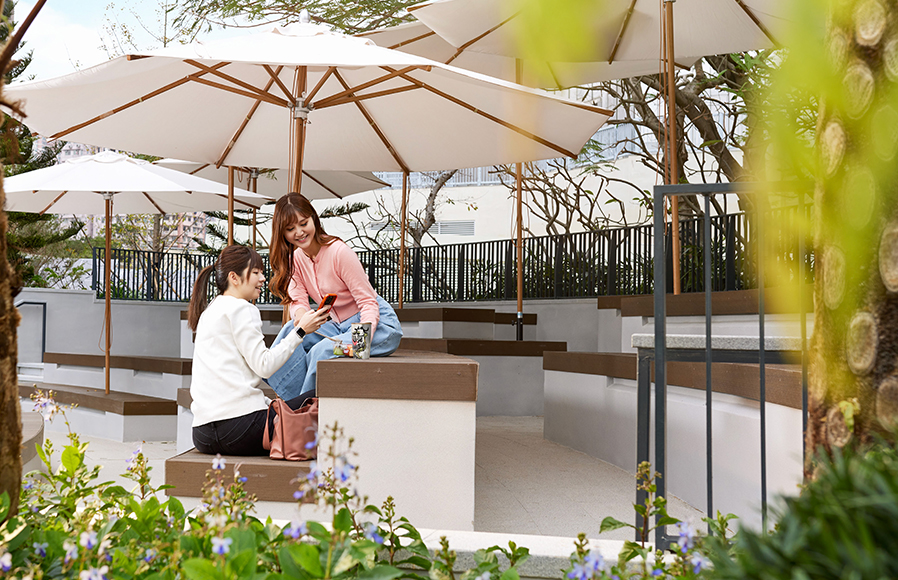The Champion work of Nina Park Design Competition
Photo courtesy: Chau Tsz Yau Clarissa
19 April 2024
Recently, Chinachem brought an illustrious panel of international architects and engineers together to judge the Nina Park Design Competition. The contest was an opportunity for full-time students studying design-related disciplines in Hong Kong and Macau, to design a ‘Pavilion For All’ to be situated in the new wood fossil park created by Chinachem Group in Tsuen Wan West. Pushing design boundaries, and with sustainability top of mind, it encouraged the entrants to “rethink the conventional function of shelter, explore and present experimental ideas, and suggest placemaking interventions and innovative design solutions”.

Amphitetheatre of Nina Park
Turning to the Nina Park Pavilion, both architects praised the standard of entries they’d judged. “Although there were a lot of incredibly imaginative and creative ideas, and quite poetic a lot of them, given time I think they all could be built in the end. The ones that we selected was probably closest to being buildable” explained David.
The winning entry, by trio CJS, from the Faculty of Architecture, The University of Hong Kong, featured a series of organic leaf like shapes, which used a combination of high tech and natural materials. A water catchment mechanism was designed into the structures to further enhance the efficiency of the Park’s water use.
And reflecting finally on the students and their path into architecture, Brian Lee’s advice to them was: “You have to become an intelligent, inquisitive and curious person who understands the entire world. You have to read extensively, watch movies, you have to travel, and understand other cultures. Don’t study architecture as an undergraduate, do something else that makes you smarter and an expert. So that when you do go into architecture, you have a different kind of perspective.”
The winning entry, by trio CJS, from the Faculty of Architecture, The University of Hong Kong, featured a series of organic leaf like shapes, which used a combination of high tech and natural materials. A water catchment mechanism was designed into the structures to further enhance the efficiency of the Park’s water use.
And reflecting finally on the students and their path into architecture, Brian Lee’s advice to them was: “You have to become an intelligent, inquisitive and curious person who understands the entire world. You have to read extensively, watch movies, you have to travel, and understand other cultures. Don’t study architecture as an undergraduate, do something else that makes you smarter and an expert. So that when you do go into architecture, you have a different kind of perspective.”






